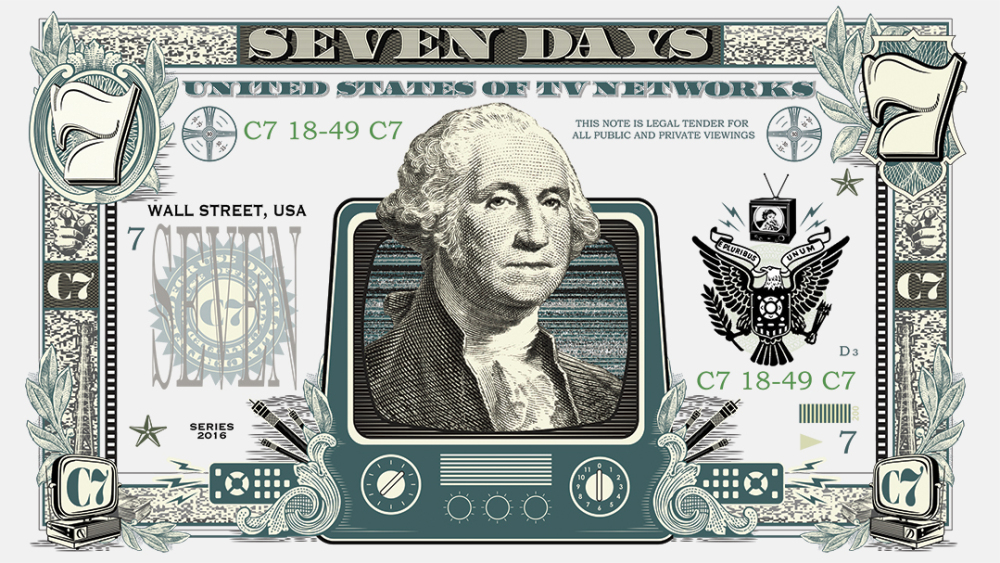CREDIT: RYAN HUDDLE FOR VARIETY
By BRIAN STEINBERG
Source: variety.com, June 2019
There’s safety in numbers, so people often say. Yet Madison Avenue thinks TV is getting safer even as many of its viewer numbers continue to decline.
The big broadcast networks should secure an increase in advance advertising commitments – somewhere in the mid-single-digit percentage range – for their fall prime time schedules, according to six executives familiar with the tone of negotiations. And there is a growing consensus that the figure could be more robust for the industry’s annual “upfront” sales season than it has been in several years. The nation’s five English-language broadcast networks secured between $9.1 billion and $10.06 billion in commitments for their primetime schedules during last year’s haggle, according toVariety estimates, an increase of between 3% and 5% from the $8.69 billion and $9.55 billion advertisers committed in 2017.
“The fact of the matter is that TV works. It still gives a strong performance” for advertisers, said one media-buying executive. “A lot of clients are seeing diminishing returns on some of these digital properties.”
The sales process continues, according to the executives but marketers have rushed to get their money down on traditional TV’s primetime and late-night programs, worried that ongoing viewer erosion means it will be significantly more difficult to reach the masses of viewers required to sell jugs of Tide, packages of Froot Loops and Apple iPhones at an efficient rate. One executive said some of the major buying agencies had registered their client budgets within hours of seeing the industry’s week of programming presentations in May – a speed that has not been seen in many years.
The media buyer estimated that the networks may be between 60% and 75% done with their sales process, while some other executives suggested they might have a complete picture of sales activity as soon as the end of this week or early next.
The surge in interest – NBCUniversal, CBS, Walt Disney, some WarnerMedia properties , the CW and Fox are seen moving along through the process in tandem – comes after years of advertisers placing increased emphasis on digital, mobile and social media. But in recent months, advertisers have grown more alarmed at a lack of transparency in the measurement of ad effectiveness by Facebook; difficulty in managing the behavior of influencers on Instagram and Twitter; and content issues on YouTube. Indeed, AT&T has pulled its ad dollars from YouTube advertising and Procter & Gamble and Unilever have begun to express uneasiness with social media.
Not everyone is seeing money tumble into corporate coffers. Some cable networks have had to grapple with a lesser degree of interest, according to executives, who note the increase in CPMs and concerns about getting ad time down in TV’s most-watched programs could leave under-performing cable outlets with a tougher path to navigate.
The shifting dynamics have given TV networks more leverage in the market. The networks have been able to press for big increases in the rate of reaching 1,000 viewers – a measure known as a CPM that is integral to these annual discussions between U.S. TV networks and Madison Avenue. After some networks came with demands of increases as high as 18%, there is a growing sense the market has moved significantly with deals that call for CPM hikes of between 10% and 15%, with NBC and CBS pressing for the higher end of that range.
Executives say demand for TV time has been bolstered by an influx of new advertisers who once spent most of their money on digital media. These so-called “direct to consumer” advertisers have built a sizable business by building communities around fitness or grooming, among other areas, via digital and social media, but are turning to TV to spark broader awareness among a wider range of potential customers. The networks have tried to cultivate companies like Peloton Warby Parker, Wayfair and Spotify, but are also seeing robust demand from automotive marketers, pharmaceutical manufacturers, and financial-services concerns, according to some of these executives.
And while Madison Avenue has long been enamored of new digital opportunities, the TV companies have begun to offer them as well. NBCUniversal took time during its recent “upfront” presentation to talk about the launch of a new streaming service in 2020. That new venue, NBCU ad-sales chairman Linda Yaccarino reminded guests assembled in May at New York’s Radio City Music Hall – will take commercials.

